

LE POITEVIN, [Eugène Modeste Edmond]. Les Diables de Lithographies. Paris / London: Chez Aumont / Charles Tilt, n.d. [1832].
Stephen Romano collection, Brooklyn NY.
Impish devils dance, make merry, kidnap young maidens, engage in scatological activities, make mischief upon men and women. and generally have a hell of a time as rascals frolicking in diabolical fun. It is the most famous of all works, paint or print, by Le Poitevin, whose "Devilries" established a genre in the wake of the Romantic school's Mephistopheles and Faust, from scenes to fright to scenes that, as here, delight with lively charm. Le Poitevin's devilries with their light, devilish humor became extremely popular with other artists, such as Michael Delaporte and Bayalos. Le Poitevin (1806-1870) was a French painter and lithographer. As a painter, he specialized in marine art , as a lithographer he is best-known today for Devilries. He was a contributor to The Journal of Painters and Charles Philpon's La Caricature. He studied at the Ecole des Beaux-Arts in Paris, a pupil of Louis Hersent and Xavier Leprince. Very popular in his time, he exhibited at the Salon from 1831 until his death in 1870 .
"Tout autre est Eugène Le Poitevin, le peintre de marines, qui popularise un genre bien différent mais dont le retentissement ne fut pas moins grand. Procédant en droite ligne du Méphistophélès de Faust et des tendances au bizarre de l'école romantique, les diableries de cet artiste vinrent jeter une note pittoresque et amusante au milieu des estampes sans couleur du consciencieux lithographe. Pendant un temps ce ne furent plus que diables et diableries, diables souvent érotiques, diableries plus ou moins légères. Les Diables, Petits sujets de diables, Bizarreries diaboliques, Encore des Diableries; c'est sous ces titres que se répandaient partout les albums à couverture brune de Le Poitevin qu'imitèrent bientôt de Bayalos avec ses Diablotins et Michel Delaporte avec ses Récréations diabolico-fantasmagoriques. Diables blancs et diables noirs suivis de diables rouges et de diables verts. Le diable se glissait partout, commettant mille incongruités, relevait les robes des femmes, les déshabillait comme par enchantement, les mettait en cage, les tirait par les cheveux, ayant toujours à son service un nombre incalculable de petits diablotins courant à tort et à travers les feuilles. Il y eut une telle invasion des sujets de messire Satan que ce ne fut plus, comme dans la chanson, « Vive la lithographie, » mais « au diable, les polissonnes" (Grand-Carteret, Les Moeurs et la caricature en France, p. 174).
"Quite different is Eugène Le Poitevin, the painter of seascapes, who popularized a very different genre but whose repercussions were no less great. of this artist came to throw a picturesque and amusing note in the middle of the colorless prints of the conscientious lithographer. For a time they were only devils and devils, devils often erotic, devils more or less light. Diabolical oddities, Encore des Diableries: it was under these titles that the brown-covered albums of Le Poitevin spread everywhere that Bayalos soon imitated with his Devils and Michel Delaporte with his Devilish-phantasmagorical recreations. White devils and black devils followed red devils and green devils. The devil slipped everywhere, committing a thousand incongruities, raised the robes of s women, undressed them as if by magic, put them in cages, pulled them by the hair, always having at their service an incalculable number of little imps running erroneously and through the leaves. There was such an invasion of the subjects of Messire Satan that it was no longer, as in the song, "Vive la lithographie," but "au diable, les polissonnes" (Grand-Carteret, Les Moeurs et la caricature en France, p . 174).
Le Poitevin (1806-1870) was a French painter and lithographer. As a painter, he specialized in marine art , as a lithographer he is best-known today for Devilries. He was a contributor to The Journal of Painters and Charles Philpon's La Caricature. He studied at the Ecole des Beaux-Arts in Paris, a pupil of Louis Hersent and Xavier Leprince. Very popular in his time, he exhibited at the Salon from 1831 until his death in 1870.
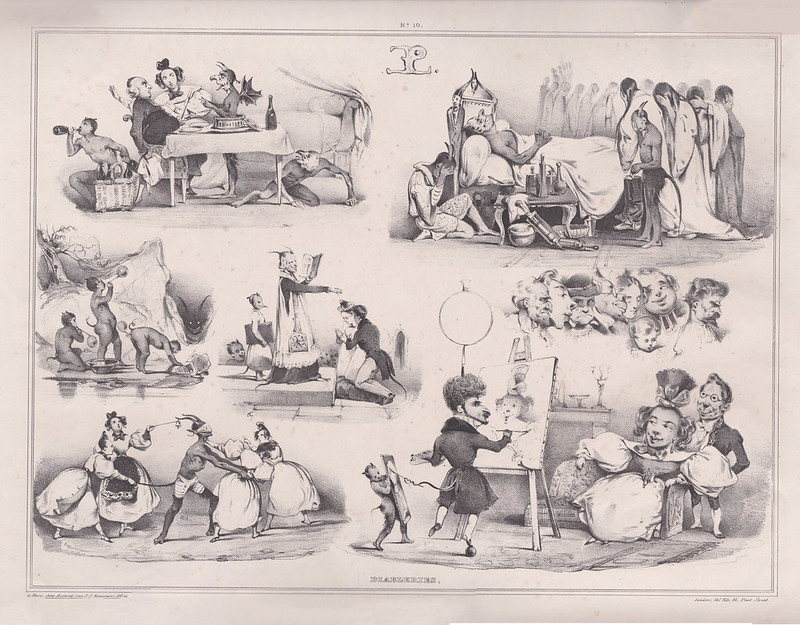


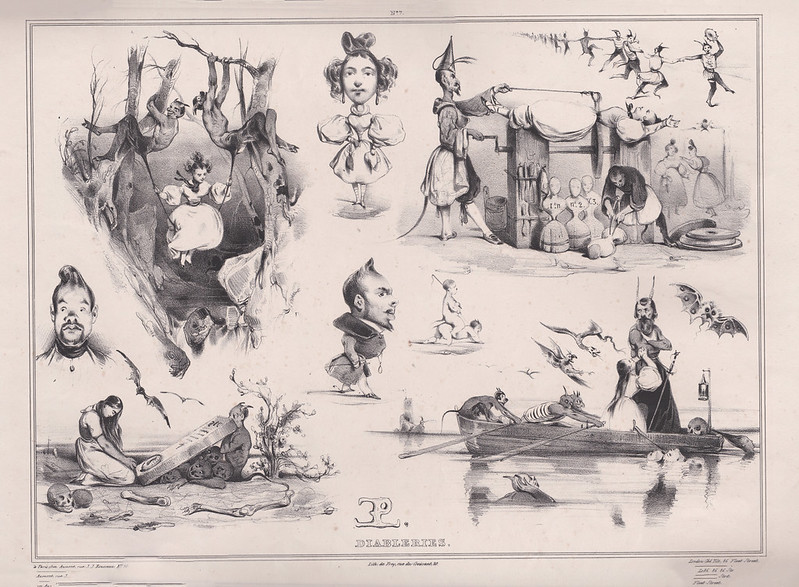


















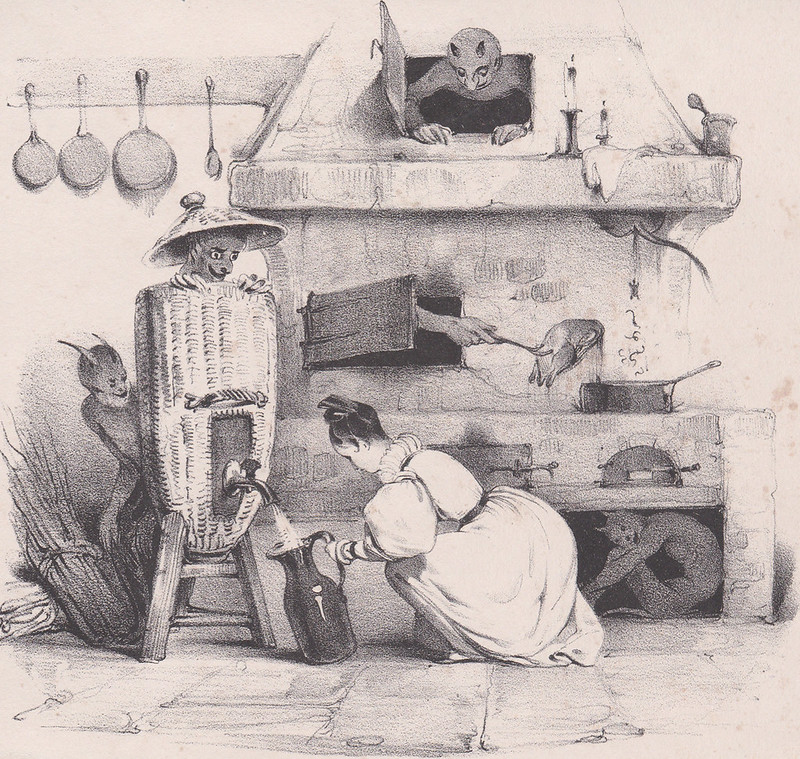


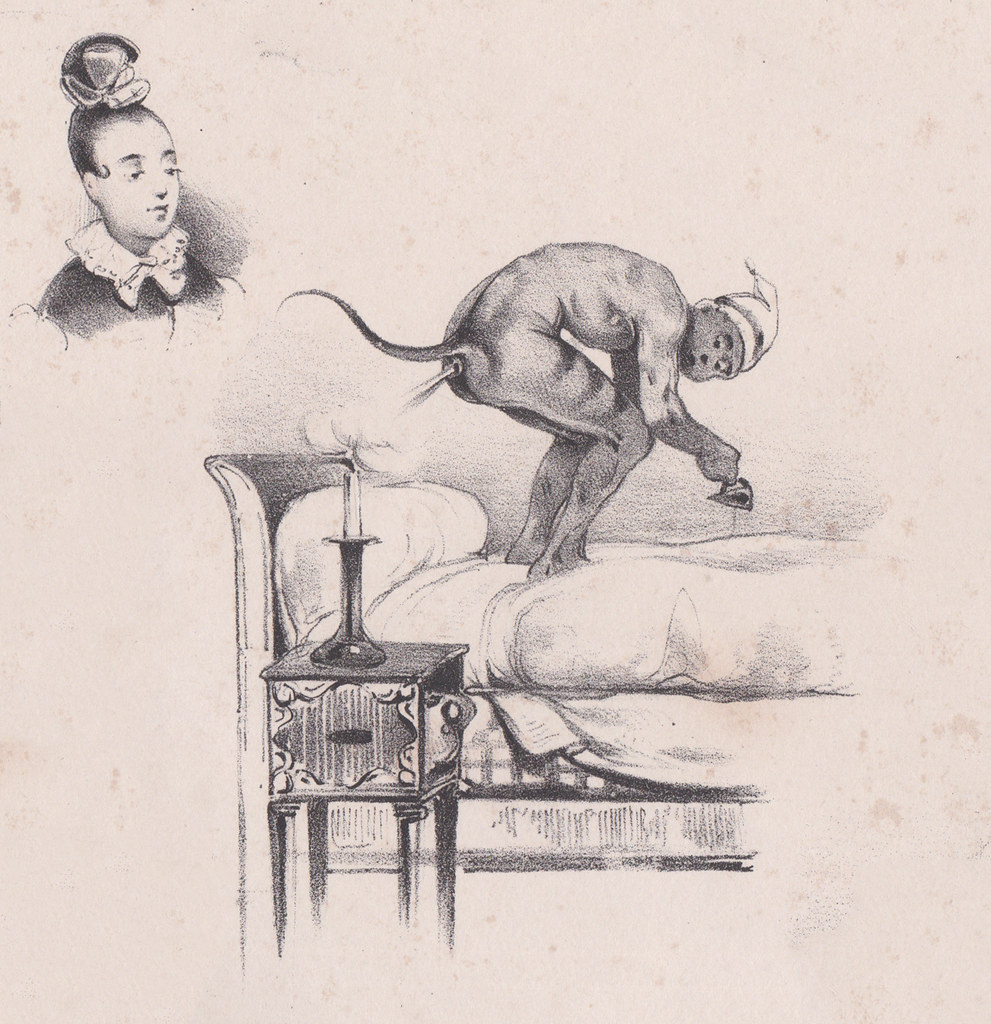











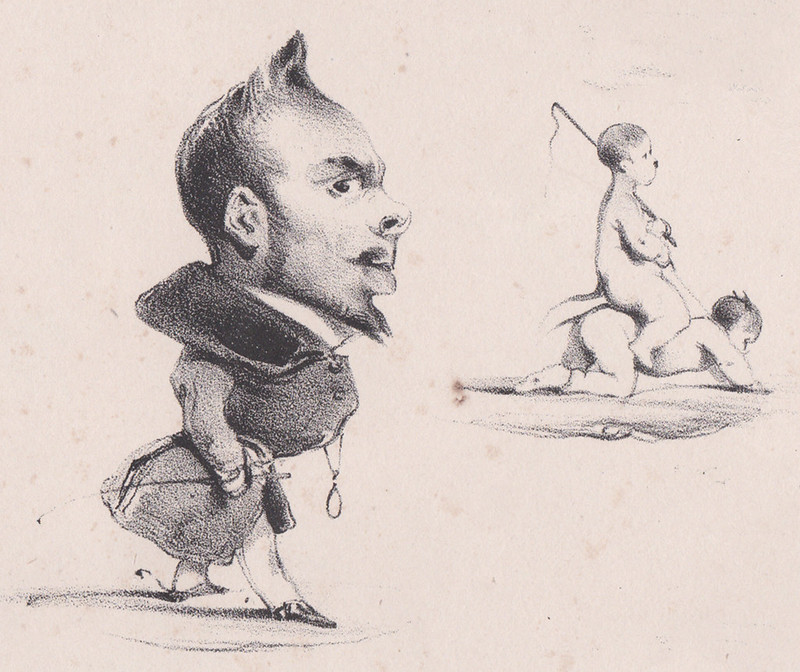







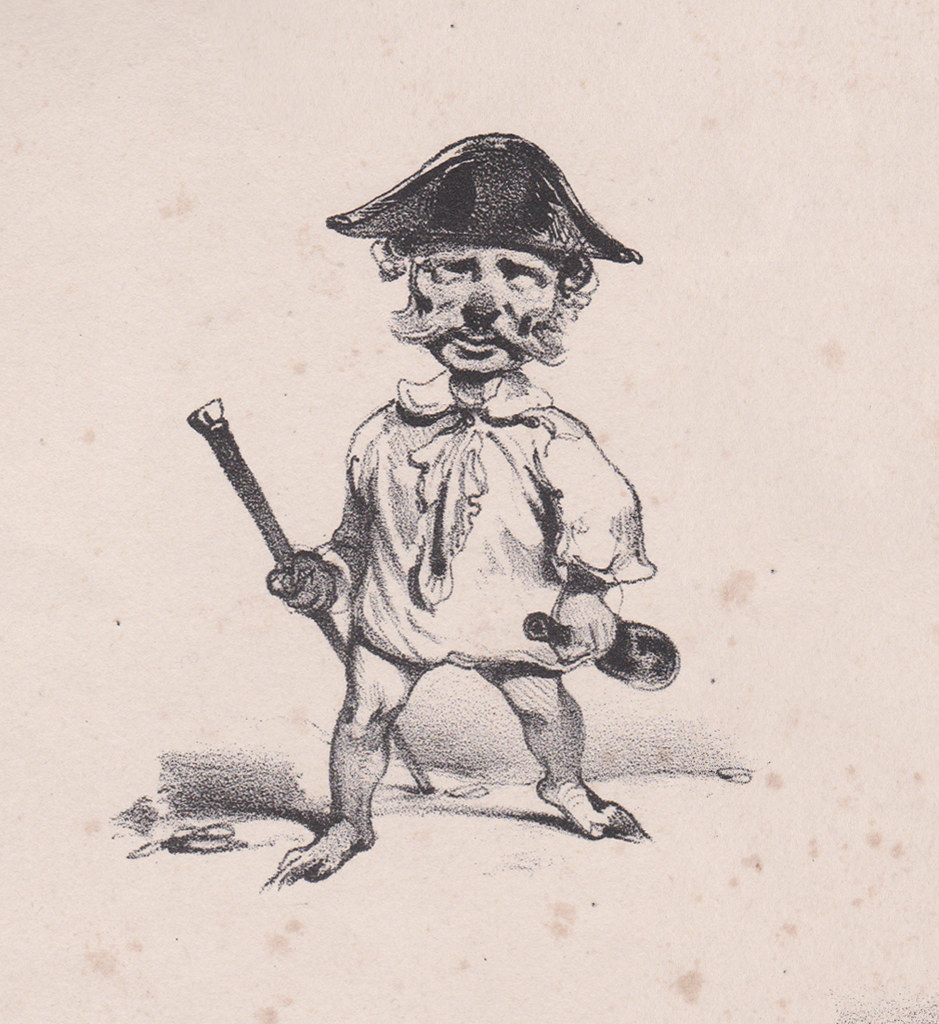

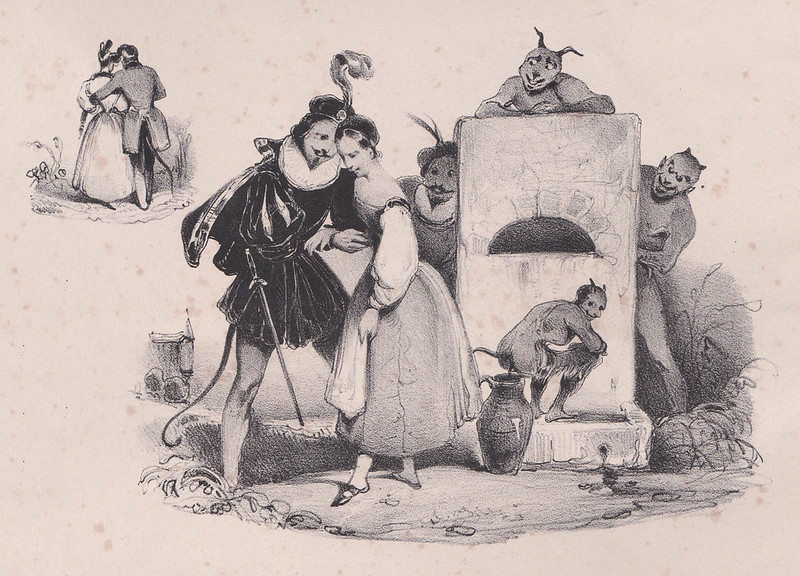


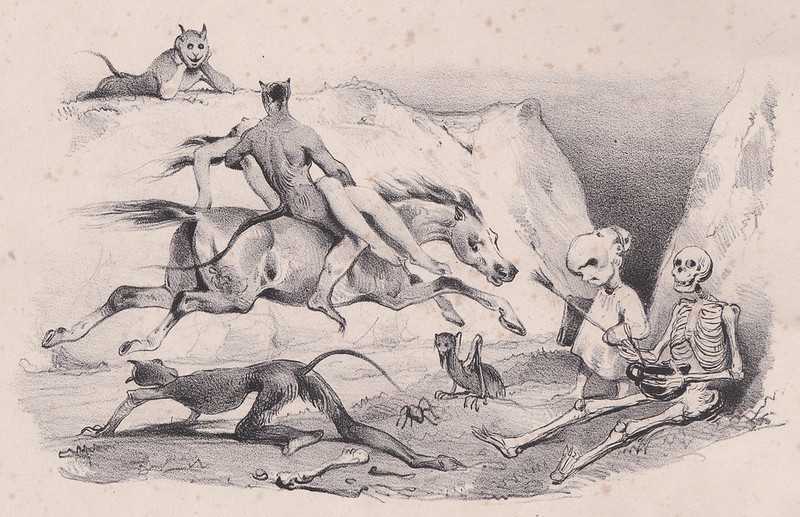




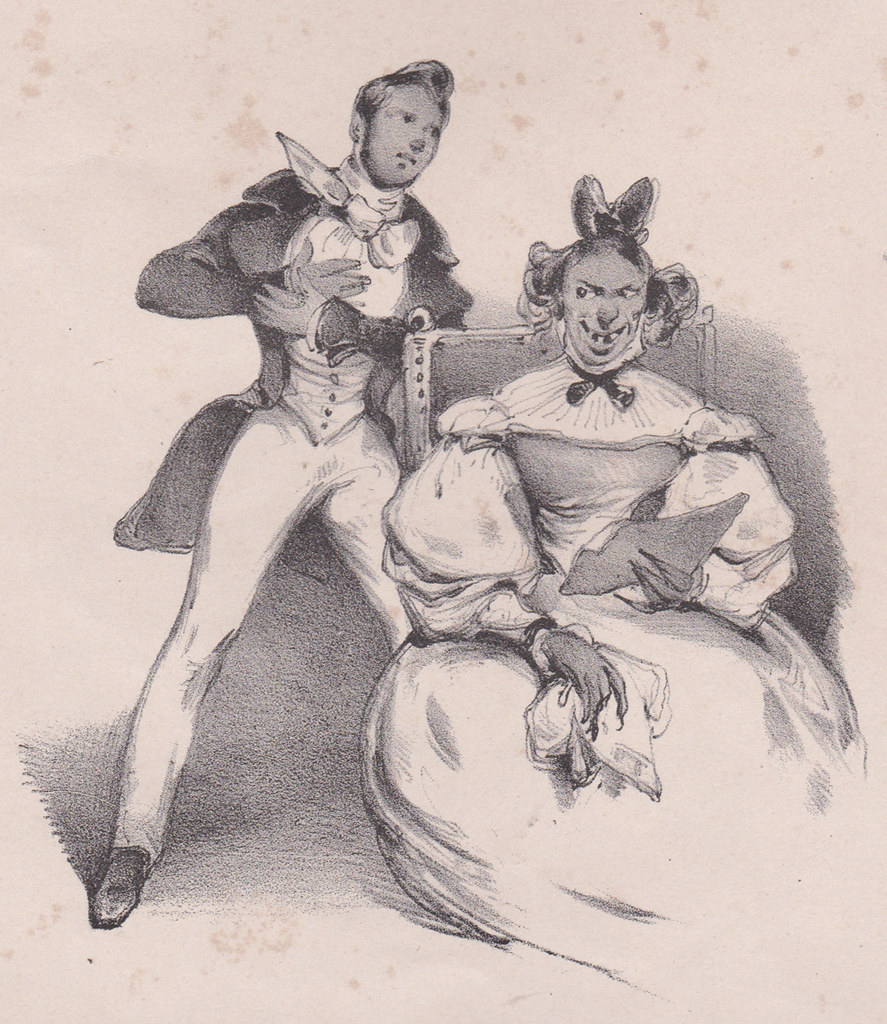



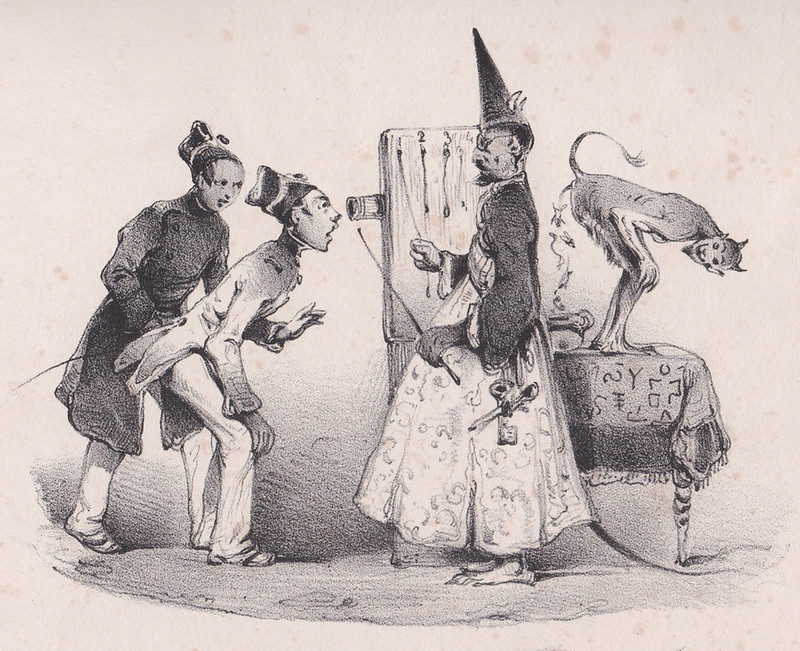

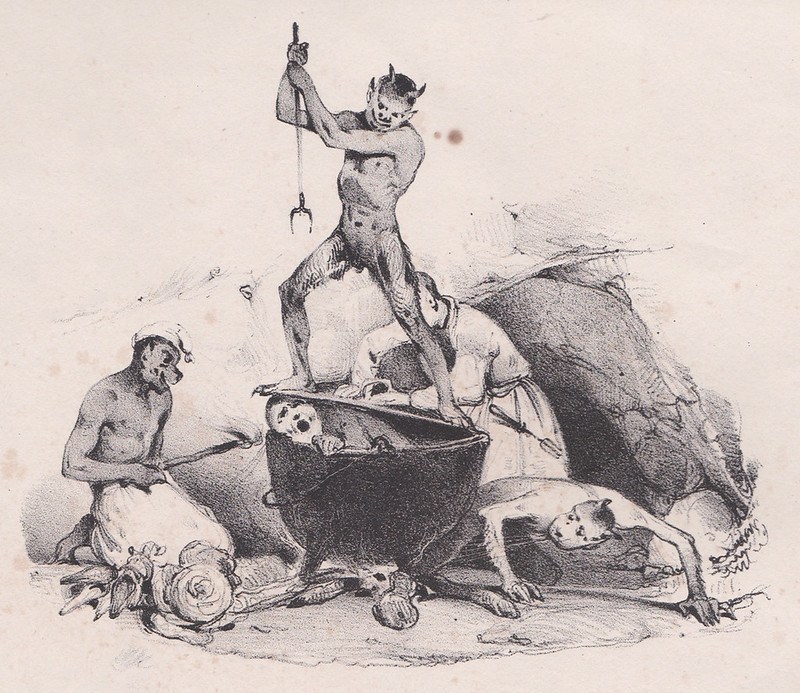



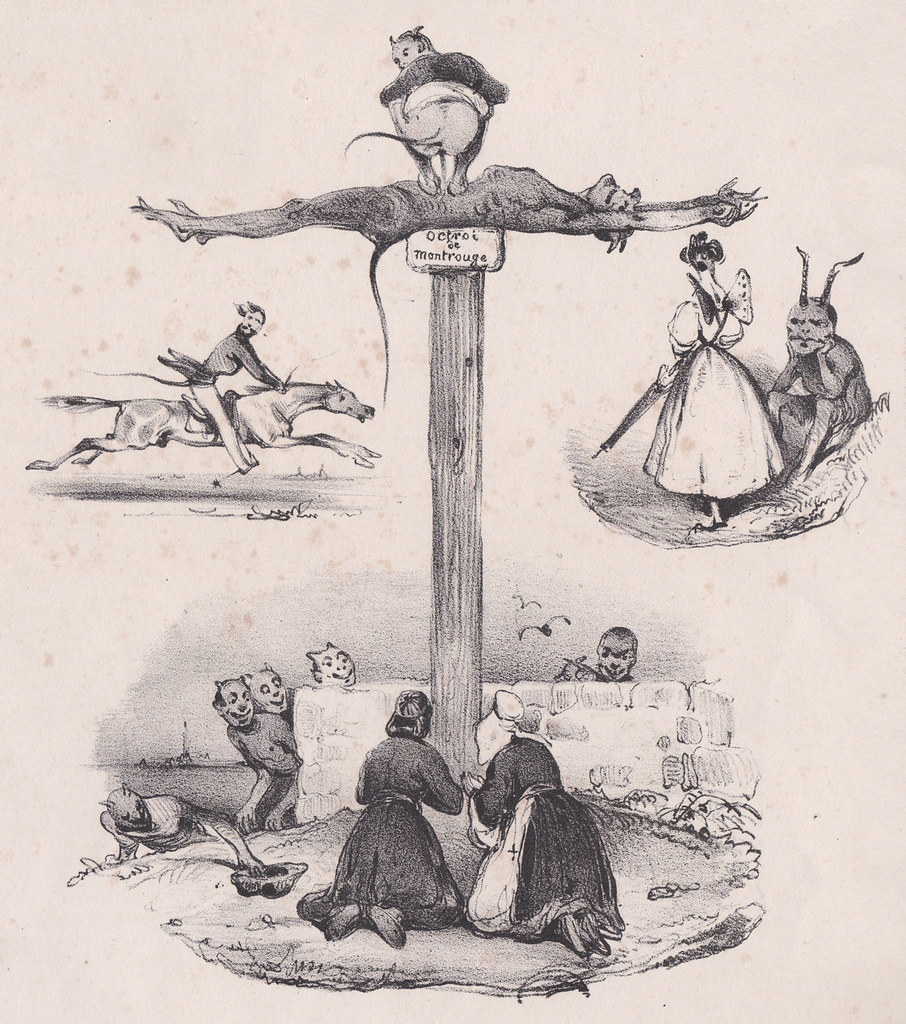




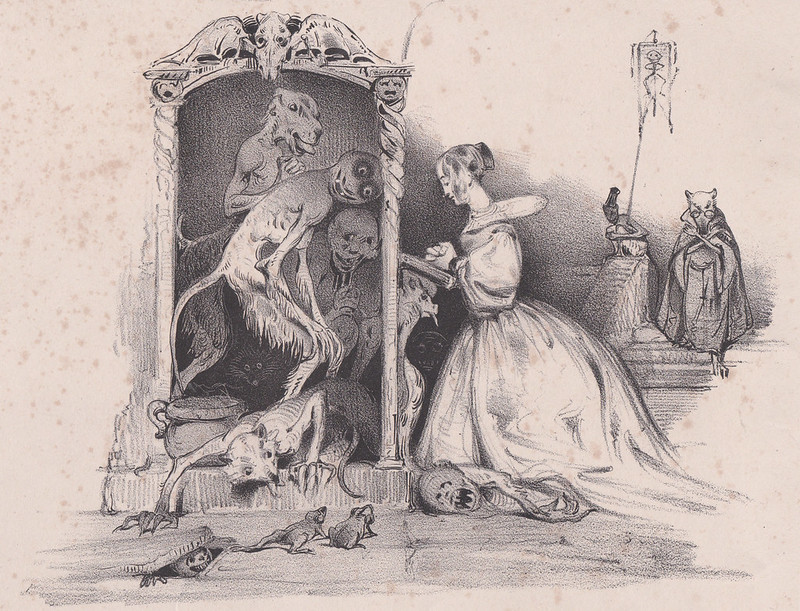











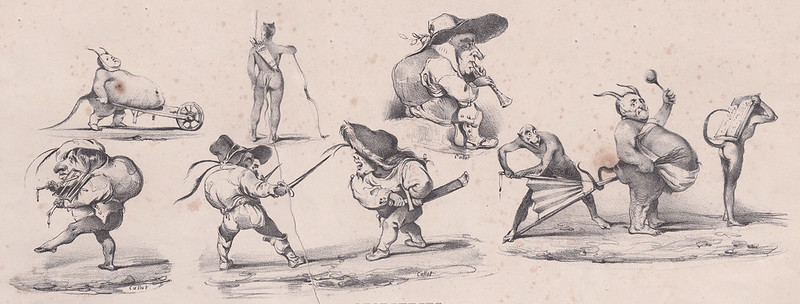






about Stephen Romano

1 comment:
awesome assembly of frolicking fiends!
Post a Comment